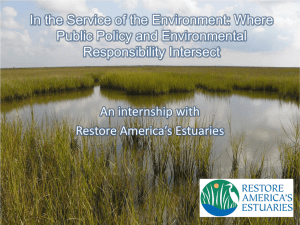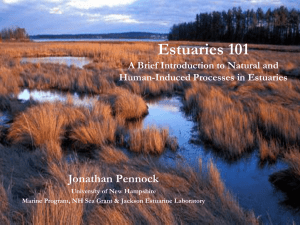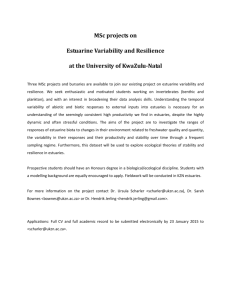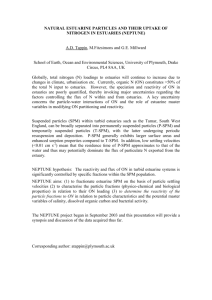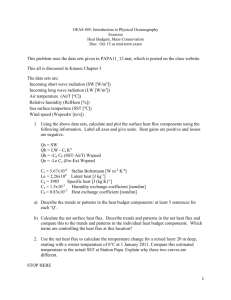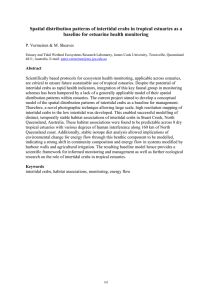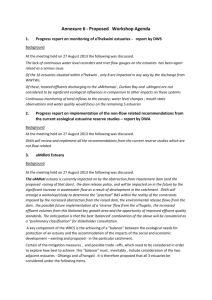Estuaries: Essay Questions on Ecology & Human Impact
advertisement
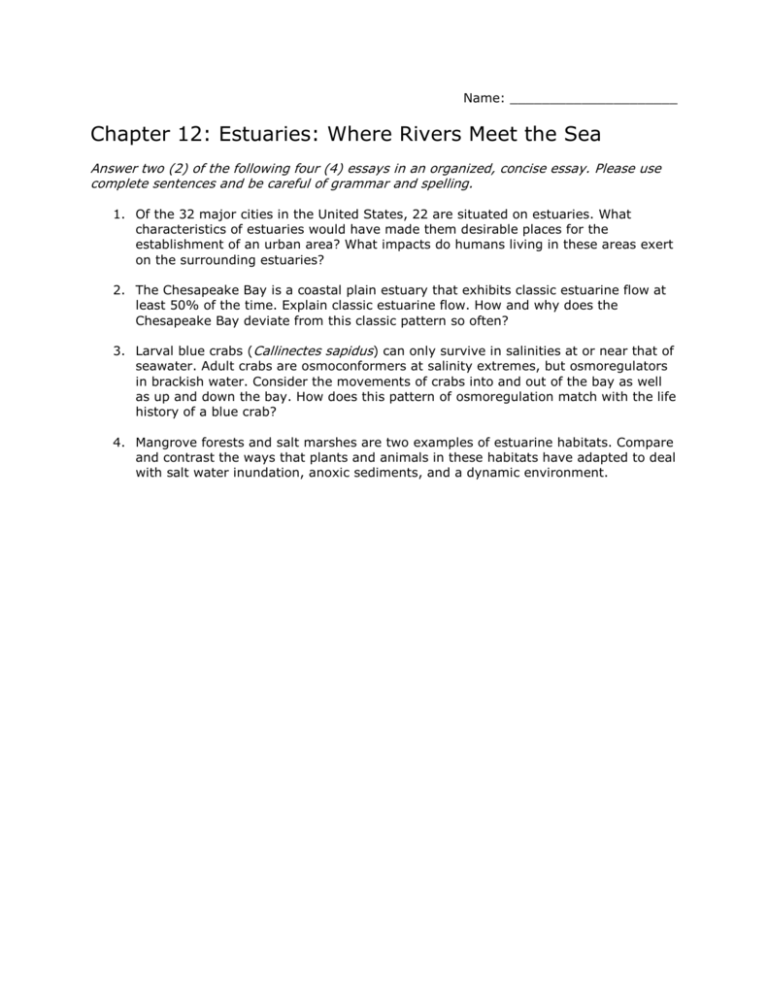
Name: _____________________ Chapter 12: Estuaries: Where Rivers Meet the Sea Answer two (2) of the following four (4) essays in an organized, concise essay. Please use complete sentences and be careful of grammar and spelling. 1. Of the 32 major cities in the United States, 22 are situated on estuaries. What characteristics of estuaries would have made them desirable places for the establishment of an urban area? What impacts do humans living in these areas exert on the surrounding estuaries? 2. The Chesapeake Bay is a coastal plain estuary that exhibits classic estuarine flow at least 50% of the time. Explain classic estuarine flow. How and why does the Chesapeake Bay deviate from this classic pattern so often? 3. Larval blue crabs (Callinectes sapidus) can only survive in salinities at or near that of seawater. Adult crabs are osmoconformers at salinity extremes, but osmoregulators in brackish water. Consider the movements of crabs into and out of the bay as well as up and down the bay. How does this pattern of osmoregulation match with the life history of a blue crab? 4. Mangrove forests and salt marshes are two examples of estuarine habitats. Compare and contrast the ways that plants and animals in these habitats have adapted to deal with salt water inundation, anoxic sediments, and a dynamic environment.
